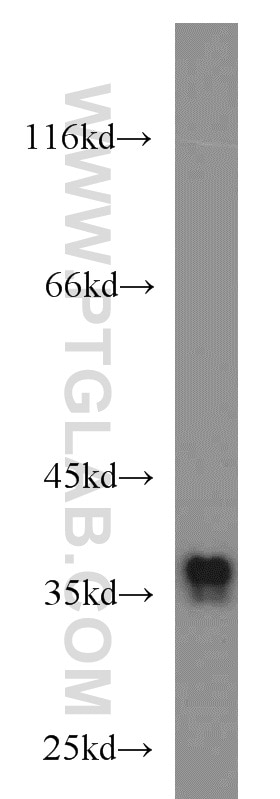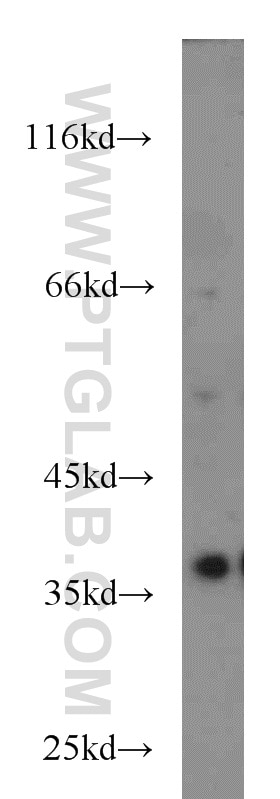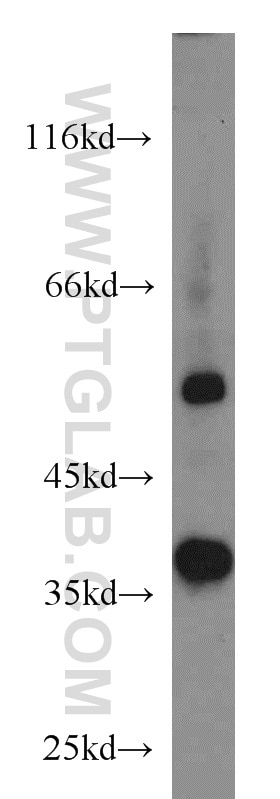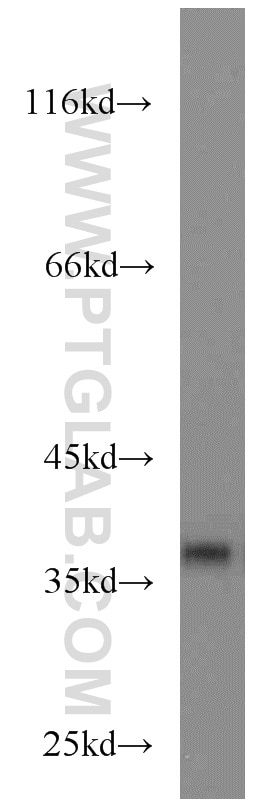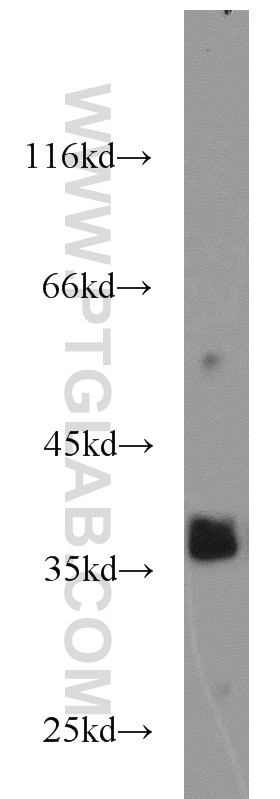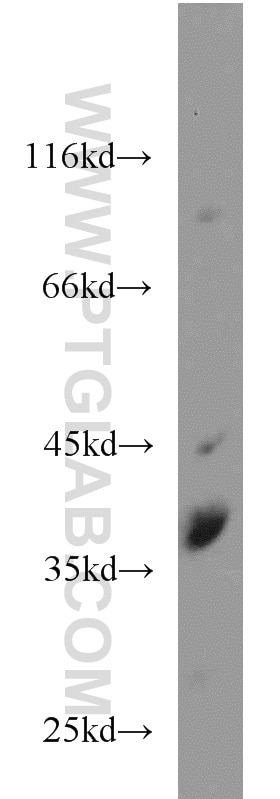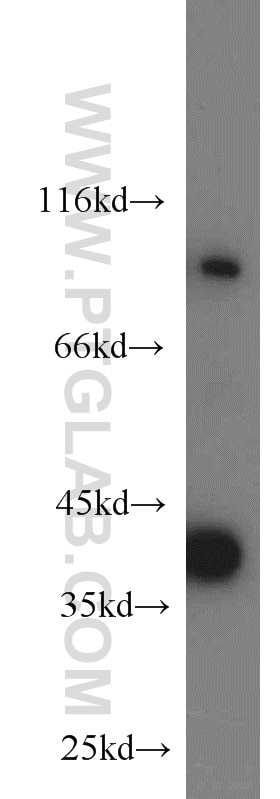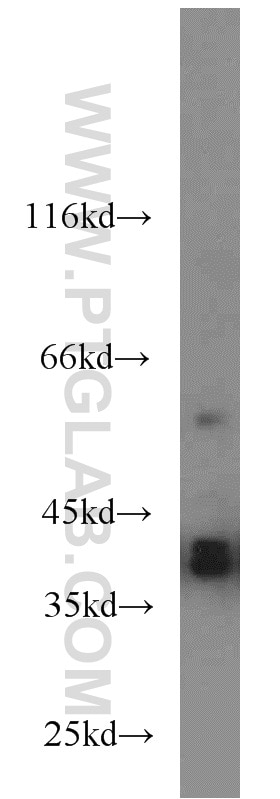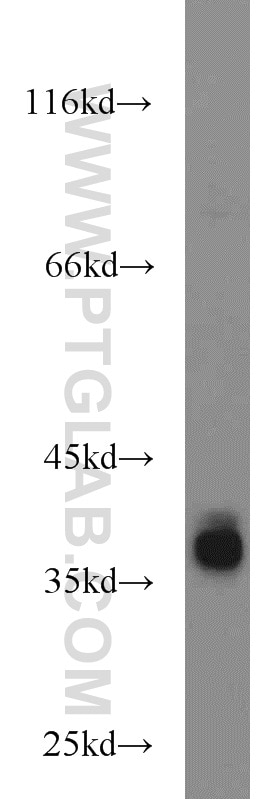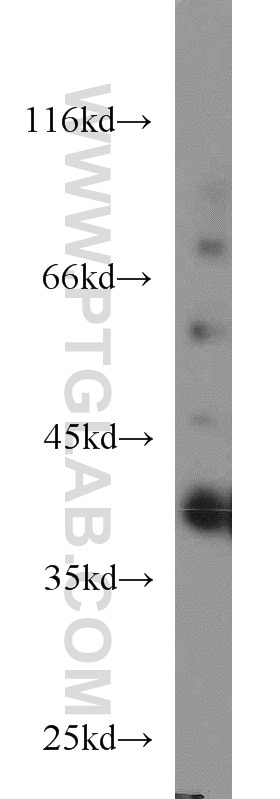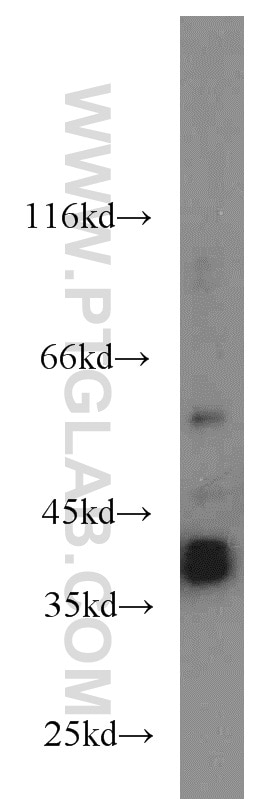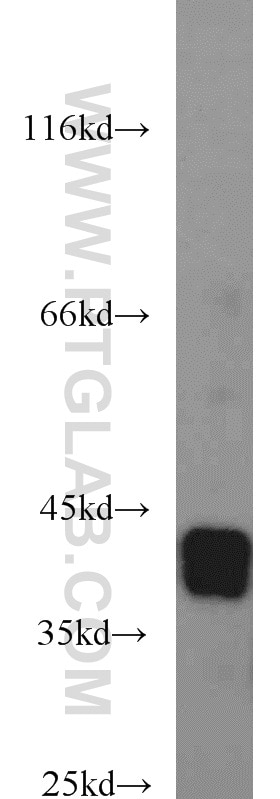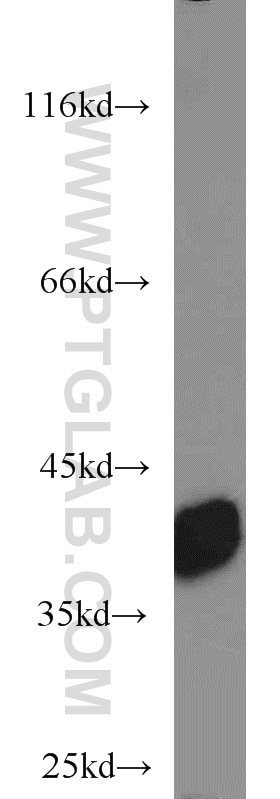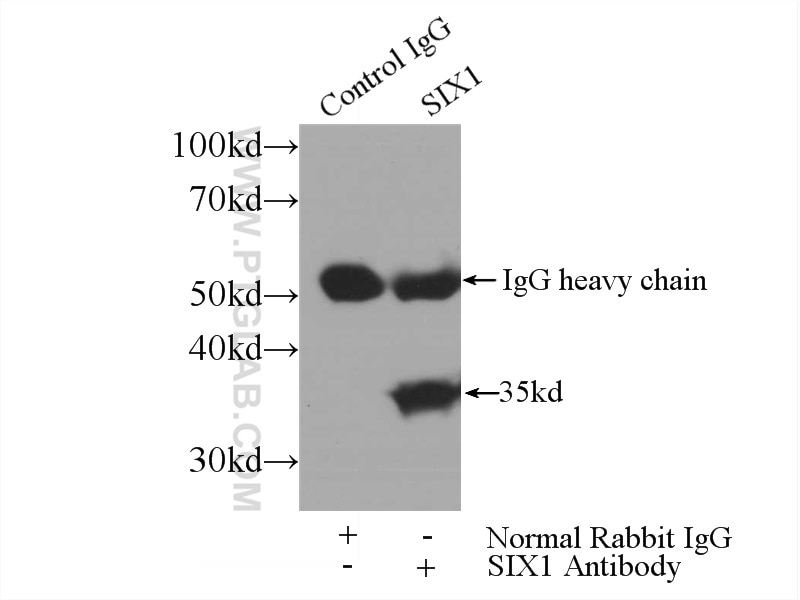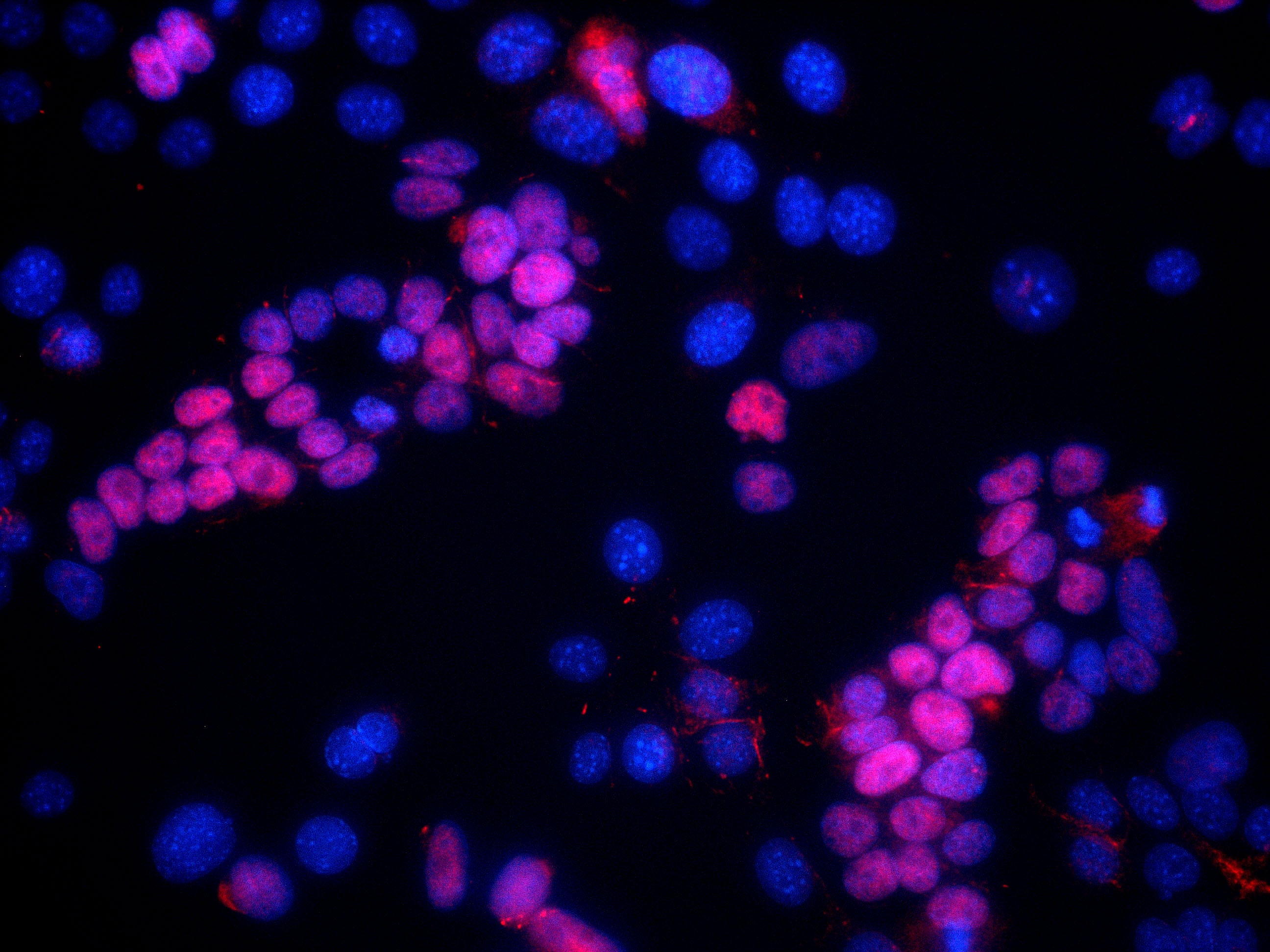- Phare
- Validé par KD/KO
Anticorps Polyclonal de lapin anti-SIX1
SIX1 Polyclonal Antibody for WB, IF/ICC, IP, ELISA
Hôte / Isotype
Lapin / IgG
Réactivité testée
Humain, souris et plus (1)
Applications
WB, IHC, IF/ICC, IP, CoIP, RIP, ELISA
Conjugaison
Non conjugué
N° de cat : 10709-1-AP
Synonymes
Galerie de données de validation
Applications testées
| Résultats positifs en WB | cellules A2780, cellules HEK-293, cellules HepG2, cellules L02, cellules PC-3, cellules SKOV-3 |
| Résultats positifs en IP | cellules HEK-293 |
| Résultats positifs en IF/ICC | cellules tumorales épithéliales |
Dilution recommandée
| Application | Dilution |
|---|---|
| Western Blot (WB) | WB : 1:500-1:1000 |
| Immunoprécipitation (IP) | IP : 0.5-4.0 ug for 1.0-3.0 mg of total protein lysate |
| Immunofluorescence (IF)/ICC | IF/ICC : 1:20-1:200 |
| It is recommended that this reagent should be titrated in each testing system to obtain optimal results. | |
| Sample-dependent, check data in validation data gallery | |
Informations sur le produit
10709-1-AP cible SIX1 dans les applications de WB, IHC, IF/ICC, IP, CoIP, RIP, ELISA et montre une réactivité avec des échantillons Humain, souris
| Réactivité | Humain, souris |
| Réactivité citée | rat, Humain, souris |
| Hôte / Isotype | Lapin / IgG |
| Clonalité | Polyclonal |
| Type | Anticorps |
| Immunogène | SIX1 Protéine recombinante Ag1044 |
| Nom complet | SIX homeobox 1 |
| Masse moléculaire calculée | 32 kDa |
| Poids moléculaire observé | 32-35 kDa |
| Numéro d’acquisition GenBank | BC008874 |
| Symbole du gène | SIX1 |
| Identification du gène (NCBI) | 6495 |
| Conjugaison | Non conjugué |
| Forme | Liquide |
| Méthode de purification | Purification par affinité contre l'antigène |
| Tampon de stockage | PBS with 0.02% sodium azide and 50% glycerol |
| Conditions de stockage | Stocker à -20°C. Stable pendant un an après l'expédition. L'aliquotage n'est pas nécessaire pour le stockage à -20oC Les 20ul contiennent 0,1% de BSA. |
Informations générales
SIX1 belongs to SIX family that contains a divergent DNA-binding homeodomain and an upstream SIX domain, which may participate both in determining DNA-binding specificity and in mediating protein-protein interactions. It may be involved in limb tendon and ligament development, and specifically expressed in skeletal muscle. SIX1 plays a essential role in the development of numerous organs and shows littlt to no expression in most non-neoplastic adult tissue, yet is overexpression in a number of meoplasms where it increases cell proliferation and survival. The calcualted molecular weight of SIX1 is 32kDa, but modified SIX1 is about 35 kDa.
Protocole
| Product Specific Protocols | |
|---|---|
| WB protocol for SIX1 antibody 10709-1-AP | Download protocol |
| IP protocol for SIX1 antibody 10709-1-AP | Download protocol |
| Standard Protocols | |
|---|---|
| Click here to view our Standard Protocols |
Publications
| Species | Application | Title |
|---|---|---|
Cancer Cell Transcriptional Regulation of the Warburg Effect in Cancer by SIX1.
| ||
Adv Sci (Weinh) Transcriptional Regulation of De Novo Lipogenesis by SIX1 in Liver Cancer Cells | ||
Nat Commun Muscle progenitor specification and myogenic differentiation are associated with changes in chromatin topology. | ||
Int J Biol Sci Novel LncRNA LINC02936 Suppresses Ferroptosis and Promotes Tumor Progression by Interacting with SIX1/CP Axis in Endometrial Cancer
| ||
Theranostics O-GlcNAcylation of SIX1 enhances its stability and promotes Hepatocellular Carcinoma Proliferation.
|
